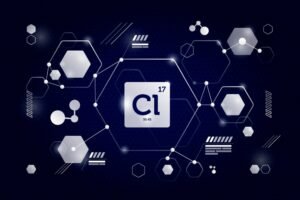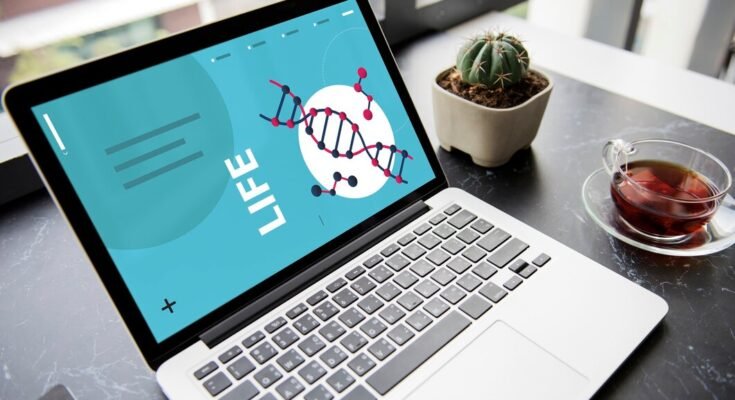In the complex system of organisms, ATP bio is life energy, a power that gives us the power to do daily activities. Energy is a great vitality for the body to do basic tasks like digesting food, breathing, and doing complicated things like running, thinking, and other kinematic movements.
Without vitality, our body cannot function properly. It is just like fuel that keeps our body engine running smoothly. Energy is a basic need to perform our body’s different functions; it is crucial for our cells.
How our body cells work: the energy in our cells is based on tiny molecules called adenosine triphosphate, or, in short, ATP bio. It is just like money that all cells pay to do everything they need to perform various bodily tasks. ATP is crucial for body function; it provides power to our body that helps the chemicals in our body react and keep us alive and healthy. It is just like a mobile battery that keeps mobile phones running smoothly. It ensures that each function is working properly. Without ATP, bio is a basic unit for our cells that helps our body perform a proper job; without it, we cannot survive.
What is ATP bio?
Adenosine triphosphate is a nucleotide component composed of an adenine ribose sugar and consists of three phosphate groups. A special kind of energy is stored between the phosphate groups of the ATP biomolecule. It is just like having a battery that has energy in it. When cells demand energy to do their function, they break these group bonds through a process called hydrolysis.
How does ATP bio-develop?
It develops through two ways: substrate-level phosphorylation, in which phosphate groups directly pass to other ADP molecules, turns into ATP bio. This process typically occurs during glycolysis and the citric acid cycle. It is just like merging ingredients to make a recipe. On the other hand, a process that happens inside the mitochondria is called the powerhouse of cells. This process is called oxidative phosphorylation.
ATP bio: electron transport process.
This process is called the electron transport chain when electrons pass through something. As they travel along, they generate energy. This energy helps protons move across the inner membrane of the mitochondria, creating an electrical charge. This charge encourages ATP biosynthesis to produce a special enzyme called ATP biosynthesis. It is like a tube-well wheel to generate electricity. This process is called chemiosmosis, showing how cells generate energy.
ATP resources.
ATP bioserves as a basic source of energy that produces cellular activity. Power the cellular process once it is synthesized. It gives energy to various kinds of biochemical processes, which include:
Muscle reduction.
When muscles contract, ATP bio offers the energy required for the interaction between action and myosin filaments, which authorizes muscle fibers to abbreviate and generate energy.
Energetic transport.
ATP bio processing is essential for active transition processes across cell membranes, such as jumping ions potassium and sodium opposite their gradient concentration, maintaining cellular homeostasis.
Process of ATP Biosynthesis.
This process is known as the electron transport chain when electrons move through something. They produce energy as they move forward. Protons can pass through the mitochondria’s inner membrane with the aid of this energy, producing an electrical charge. The production of ATP bio Synthesis, a unique enzyme, is stimulated by this charge in ATP biosynthesis. It produces electricity similarly to a tube well wheel. This mechanism, known as chemiosmosis, demonstrates how cells produce energy.
ATP sources.
ATP bio, a fundamental energy source, produces cellular activity. Once synthesized, it provides energy to the cellular process. It provides energy for a range of biochemical processes, such as:
Muscle loss.
Because ATP bio provides the energy required for the interaction of action and myosin filaments, muscle fibers can shorten and produce energy when they contract.

Energy-based transportation.
The processing of ATP bio is necessary for dynamic transitions across cell membranes, such as the jumping of ions like potassium and sodium against their gradient concentration, which preserves cellular equilibrium.
Cellular cues.
ATP bio takes part in cell signaling pathways with phosphorylating proteins to regulate their transmitting signals and activities within the cell.
Metabolic responses.
Many metabolic pathways, including biosynthesis, crash the molecules using ATP BIO as an energy source to create chemical reactions.
Preserving the balance of cellular energy through ATP recycling.
The ATP biocycle is an energetic cycle created by the continuous hydrolysis and synthesis of ATP. To release energy, ATP is hydrolyzed to produce ADP and inorganic phosphate (Pi). Cellular respiration or other metabolic processes convert ADP and Pi into ATP.
Disorders that are associated with ATP dysfunction.
Various dysfunctions and disruptions in ATP bioproduction can lead to various bodily disorders and diseases, for example:
Disfunctioning in mitochondria.
Mitochondrial diseases occur when there is a malfunction in ATP bio synthesis. In which the body shows some symptoms, such as neurological problems, muscle weakness, and metabolic abnormalities.
Metabolic disorders.
Deficiency in enzyme performance in ATP biosynthesis leads to metabolic dysfunctional disorders that lead to lipid metabolism and glycogen storage disorders.
Cellular signals.
To control how phosphorylated proteins transmit signals and carry out other functions inside the cell, ATP bio participates in cell signaling pathways.
Metabolic reactions.
Several metabolic processes, such as biosynthesis, smash the molecules with the help of ATP bio as an energy source to initiate chemical reactions.
Recycling ATP to maintain the equilibrium of cellular energy.
The constant hydrolysis and synthesis of ATP bio produce the ATP bio cycle, an energetic cycle. ADP and inorganic phosphate (Pi) are produced when ATP is hydrolyzed to release energy. ADP and Pi are changed into ATP by cellular respiration or other metabolic processes.
Conditions linked to ATP dysfunction include:
Numerous illnesses and disorders of the body can result from different dysfunctions and disruptions in the production of ATP bio, such as:
Mitochondrial dysfunction.
Mitochondrial diseases arise when there is an issue with the synthesis of ATP bio. The body manifests certain symptoms, including aberrant metabolism, neurological issues, and muscle weakness.
Disorders of metabolism.
Metabolic dysfunctional disorders, which result in disorders related to lipid metabolism and glycogen storage, are caused by deficiencies in enzyme performance in ATP biosynthesis.
Conclusion:
The primary player in cells’ acquisition and utilization of energy is adenosine triphosphate, or ATP. Ensuring that all the diverse tasks that cells perform can be completed is crucial. Our cells could not function correctly without ATP bio, preventing us from staying healthy. The synthesis, utilization, and recycling of ATP provide crucial hints about the functioning of our bodies. It also aids in researching solutions for health issues related to energy metabolism.



